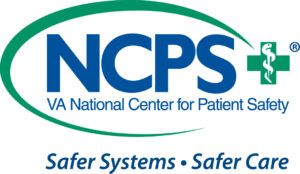- Dissemination and Implementation
- HIPxChange
- Infectious Disease
- Prevention
- Quality and Safety
- Stakeholder Engagement
*Free registration is required to use the toolkits provided within HIPxChange. This information is required by our funders and is used to determine the impact of the materials posted on the website.
Background
This toolkit addresses healthcare-associated infections (HAIs), an issue of a public health importance. Approximately 722,000 people are afflicted by an HAI every year (1 in 25 hospitalized patients) and 75,000 people with HAIs die. Prevention of HAIs is now a national priority in the United States. Daily bathing treatments with chlorhexidine gluconate (CHG) for hospitalized patients is one evidence-based intervention targeting HAIs.
We developed this toolkit based on two implementation studies: Implementation of Chlorhexidine Bathing to Reduce HAIs (the ICARE study), and Human-factors Engineering to Prevent Resistant Organisms (the HERO study). Both of these studies evaluated implementation of CHG bathing treatments in multiple non-ICU acute care settings using a human factors model called the Systems Engineering Initiative for Patient Safety (SEIPS).
Who should use this toolkit?
This toolkit is intended for infection prevention professionals, nursing and other allied health professionals, and researchers interested in general implementation science.
What does this toolkit contain?
This toolkit contains the following content, which was developed throughout the ICARE and HERO study process. All content in this toolkit was developed through an iterative process, using a human-centered design approach.
| Section | Content |
| Introduction | The Introduction explains the scientific rationale behind CHG bathing treatments. It details the ICARE and HERO implementation studies and the application of the SIEPS model. |
| Organizational Readiness | Organizational Readiness helps you determine if your organization is ready to implement CHG bathing treatments by assessing the current state of your organization and considering costs associated with the implementation. |
| Implementation | Implementation provides the steps needed to roll-out CHG bathing treatments at your organization: 1. Organizational Planning 2. Educating Healthcare Workers 3. Educating Patients 4. Answering Frequently Asked Questions |
| Monitoring and Feedback | Monitoring and Feedback focuses on continuous evaluation and improvement of the CHG bathing treatment implementation process and outcomes. |
| Appendix | The Appendix provides supplemental information, resources, and tools to the material addressed in the toolkit. The end of each section of the toolkit provides links to the accompanying Appendices. |
Customizing this toolkit
This toolkit is customizable which allows you to easily adapt the content for use in your organization. Consider adapting policies specific to your organization and terminology that you believe will promote acceptance of CHG bathing treatments in your organizations.
Development of this toolkit
Chlorhexidine Bathing Treatments: A Toolkit to Guide Implementation was developed by researchers and clinicians (Principal Investigator: Dr. Nasia Safdar) at the William S. Middleton Memorial Veterans Hospital and the University of Wisconsin-Madison School of Medicine & Public Health – Department of Medicine.
This work was supported by the VHA National Center for Patient Safety, Patient Safety Center of Inquiry United States (U.S.) Department of Veterans Affairs. The views expressed in this article are those of the author(s) and do not represent the views of the U.S. Department of Veterans Affairs or the United States Government.
This project was also supported by grant number R18HS024039 from the Agency for Healthcare Research and Quality (AHRQ). The content is solely the responsibility of the authors and does not necessarily represent the official views of AHRQ.
Please send questions, comments and suggestions to HIPxChange@hip.wisc.edu
Toolkit Citation
Musuuza J, Purfuerst A, Knobloch MJ, McKinley L, Schoofs Hundt A, Zimbric M, Carayon P, Safdar N. Chlorhexidine Bathing Treatments: A Toolkit to Guide Implementation. Veterans Health Administration (VHA) National Center for Patient Safety, Patient Safety Center of Inquiry and the University of Wisconsin (UW) – Madison Department of Medicine and the UW Health Innovation Program. Madison, WI; 2018. Available at: https://www.hipxchange.org/CHGBathing.
Acknowledgments
We would like to thank the following organizations.
- William S. Middleton Memorial Veterans Hospital
- Milwaukee VA Medical Center (Zablocki)
- Portland VA Medical Center
- James J Peters VA Medical Center
- Tomah VA Medical Center
- SSM Health St. Mary’s Hospital – Madison
- American Family Children’s Hospital
- University Health System – San Antonio
- The University of Texas Health Science Center at San Antonio







